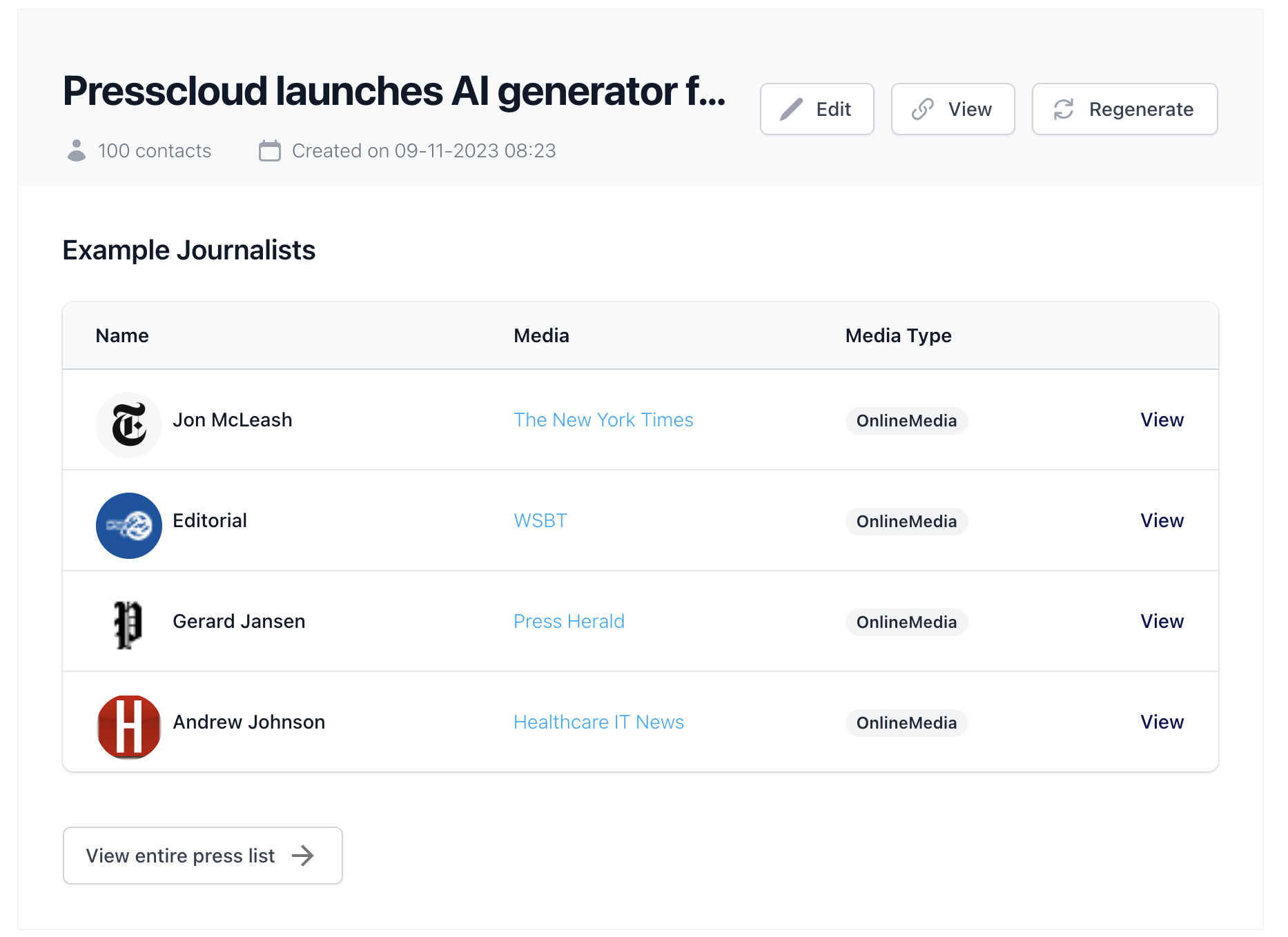In today's digital age, media exposure plays a crucial role in the success of any business or individual. Whether you're aiming to promote a product, service, or personal brand, understanding how to maximize media exposure is essential. This article will guide you through the process of crafting an effective media strategy, creating compelling content, building relationships with media outlets, and utilizing social media for greater exposure.
Understanding Media Exposure
The Importance of Media Exposure
Media exposure is a powerful tool that can significantly impact your business or personal brand's visibility. It allows you to reach a wider audience, build credibility, and increase brand awareness. By strategically leveraging different media outlets, you can position yourself or your business as an expert, gain more customers, and even attract potential investors.
When it comes to media exposure, the benefits are abundant. One of the key advantages is the ability to reach a larger audience. Traditional media outlets like newspapers, magazines, radio, and television have a wide readership and viewership, providing you with an opportunity to showcase your brand to a diverse range of people. This exposure can lead to increased recognition and a broader customer base.
Moreover, media exposure helps build credibility. When your brand is featured in reputable media outlets, it adds a layer of trust and authenticity. People are more likely to believe in your expertise and consider your brand as a reliable source of information or products. This can greatly enhance your reputation and attract more customers who value credibility.
In addition to increased visibility and credibility, media exposure also allows you to raise brand awareness. By consistently appearing in different media outlets, you create a strong presence in the minds of your target audience. This repeated exposure helps to establish your brand as a recognizable and trusted entity, making it more likely for potential customers to choose your products or services over competitors.
Different Types of Media Outlets
There are various types of media outlets that you can utilize to maximize your exposure. These include traditional media such as newspapers, magazines, radio, and television, as well as digital media platforms like blogs, online publications, podcasts, and social media.
Traditional media outlets have long been a staple in the world of media exposure. Newspapers and magazines offer a tangible and credible platform to showcase your brand. They have a loyal readership who trust the content and recommendations provided. Radio and television, on the other hand, provide an auditory and visual experience that can captivate audiences and leave a lasting impression.
With the rise of digital media, there are now more opportunities than ever to expand your media exposure. Blogs have become a popular platform for individuals and businesses to share their expertise and insights. Online publications offer a wide range of topics and niches, allowing you to target specific audiences. Podcasts provide an audio format that can be easily consumed on the go, while social media platforms like Facebook, Twitter, and Instagram offer a vast reach and engagement potential.
By utilizing a combination of traditional and digital media outlets, you can create a comprehensive media exposure strategy that maximizes your brand's visibility and impact. Each type of outlet has its own unique advantages and audience demographics, allowing you to tailor your message and content accordingly.
Crafting Your Media Strategy
Developing a comprehensive media strategy is essential for businesses looking to make a lasting impact in today's digital landscape. By effectively leveraging various media outlets, organizations can reach their target audience, build brand awareness, and achieve their business objectives. In this article, we will explore two key steps in crafting a successful media strategy: identifying your target audience and setting clear goals.
Identifying Your Target Audience
Before diving into media exposure, it's crucial to identify your target audience. Understanding their demographics, interests, and preferred media outlets will help you tailor your approach to maximize engagement and reach. Conducting thorough market research is an essential first step in this process. By analyzing market trends, consumer behavior, and competitor strategies, you can gain valuable insights into your audience's preferences.
Another effective way to identify your target audience is by analyzing your existing customer base. By examining your current customers' characteristics, you can uncover patterns and similarities that will guide your media strategy. Additionally, utilizing data analytics can provide you with valuable information about your audience's online behavior, such as their preferred social media platforms, search habits, and content consumption patterns.
Once you have gathered all the necessary data, you can create detailed buyer personas that represent your target audience segments. These personas should include information such as age, gender, location, interests, and media consumption habits. By having a clear understanding of who your audience is, you can tailor your media strategy to effectively reach and engage them.
Setting Clear Goals
Without clear goals, your media strategy may lack direction and effectiveness. Determining what you aim to achieve through media exposure is crucial for guiding your decision-making process. Are you looking to increase brand awareness, generate leads, or establish thought leadership in your industry? Setting specific, measurable, attainable, relevant, and time-bound (SMART) goals that align with your overall business objectives is essential.
Increasing brand awareness is a common goal for many businesses. By leveraging media outlets such as social media platforms, online publications, and influencer collaborations, you can expose your brand to a wider audience and increase its visibility. Generating leads, on the other hand, requires a more targeted approach. Utilizing strategies such as content marketing, email marketing, and search engine optimization (SEO) can help attract potential customers and convert them into leads.
Establishing thought leadership is another valuable goal for businesses looking to position themselves as industry experts. By consistently creating and sharing high-quality content, participating in industry events, and engaging in relevant discussions, you can build credibility and establish your brand as a trusted source of information.
When setting your goals, it's important to ensure they are realistic and achievable. By breaking down your larger objectives into smaller, actionable steps, you can track your progress and make necessary adjustments along the way. Regularly reviewing and analyzing your media strategy's performance will help you identify areas for improvement and make data-driven decisions.
In conclusion, crafting a media strategy requires careful consideration of your target audience and clear goal setting. By understanding who your audience is and what you aim to achieve, you can tailor your approach and maximize the impact of your media efforts. Remember, a well-executed media strategy can be a powerful tool in reaching your business objectives and establishing a strong brand presence.
Creating Compelling Content
The Role of Storytelling in Media Exposure
Storytelling is an essential element of creating compelling content for media exposure. It allows you to connect with your audience on an emotional level and leave a lasting impression. Craft narratives that resonate with your target audience, highlighting your unique selling propositions, experiences, and successes.
Tips for Creating Engaging Content
When creating content for media exposure, consider the following tips:
- Be concise: Keep your message clear and concise, grabbing the reader's attention from the start.
- Use visuals: Incorporate images, videos, and infographics to enhance engagement and break up text.
- Include quotes and testimonials: Quotes and testimonials from satisfied customers or industry experts add credibility and authenticity to your content.
- Add variety: Utilize different content formats such as articles, blog posts, videos, podcasts, and interviews to appeal to different audience preferences.
- Optimize for SEO: Incorporate relevant keywords and phrases to improve search engine visibility.
Building Relationships with Media Outlets
How to Approach Media Outlets
Building relationships with media outlets requires a strategic approach. Research and identify the relevant media outlets that align with your target audience and industry. Familiarize yourself with their content, journalists, and editorial calendars. When reaching out, personalize your pitch, highlighting why your story or expertise is valuable to their audience. Establishing meaningful connections with journalists and editors will increase your chances of getting media coverage.
Maintaining Positive Media Relationships
Building relationships with media outlets is an ongoing process that requires nurturing and maintaining. Stay in contact with journalists and editors by sharing relevant news, updates, and insights. Offer yourself as a valuable resource for future stories and provide exclusive access to new products or services. By nurturing these relationships, you position yourself as a go-to source, increasing your chances of securing media coverage in the future.
Utilizing Social Media for Greater Exposure
Choosing the Right Social Media Platforms
Social media platforms offer tremendous potential for expanding your media exposure. However, it's important to select the platforms that align with your target audience and objectives. Research where your target audience spends their time online and focus your efforts on the platforms that can maximize your reach and engagement.
Strategies for Social Media Engagement
Engaging with your audience is crucial on social media platforms. Here are some strategies to maximize your social media exposure:
- Create valuable content: Provide informative, entertaining, and shareable content that adds value to your audience's lives.
- Encourage audience participation: Ask questions, run polls, and conduct contests to engage your followers and encourage them to share your content.
- Build relationships with influencers: Collaborate with influencers who have a similar target audience to amplify your reach and credibility.
- Monitor and respond: Regularly monitor your social media channels and respond to comments, messages, and mentions promptly.
- Use hashtags: Utilize relevant hashtags to increase discoverability and join conversations related to your industry or niche.
Conclusion
Maximizing media exposure is a multifaceted process that requires a well-structured strategy, compelling content, strong relationships with media outlets, and a strategic approach to social media. By understanding the importance of media exposure, crafting a tailored media strategy, creating engaging content, nurturing relationships with media outlets, and utilizing social media effectively, you can increase your visibility, reach your target audience, and achieve your business objectives.




